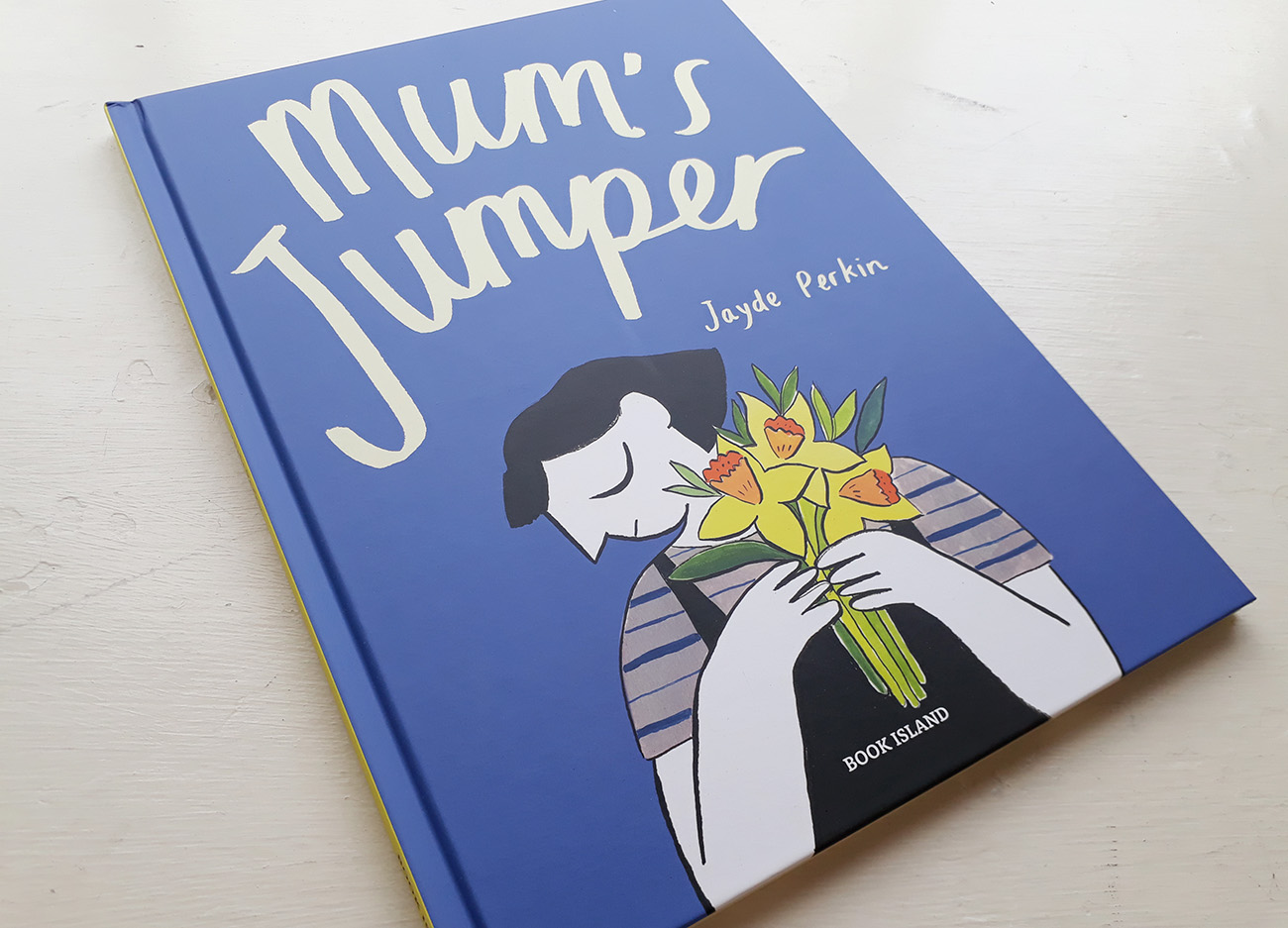Mum’s Jumper – Book Review
Written & Illustrated By Jayde Perkin
Published by Book Island ISBN: 978-1-911496-13-7
Reviewed by Andy Robert Davies
There are few things more heartbreaking or traumatic for a child than to lose a parent. Mum’s Jumper attempts to tackle this agonising scenario, by telling the story of a girl trying to understand and cope with the death of her mother.
The first page depicts a woman embracing a child in a hospital ward. It is a relatively cheerful scene; there are flowers in the room and they are both smiling. But there are indicators within the illustrations that point to the severity of the situation. The mother is sitting down on her bed, hooked up to a drip and some sort of mechanical monitor is close by. As the child skips happily home, holding the hand of her father, we see his contrasting mood. Adult readers will sense this foreboding atmosphere, as may some children, and we prepare ourselves for what is to come.
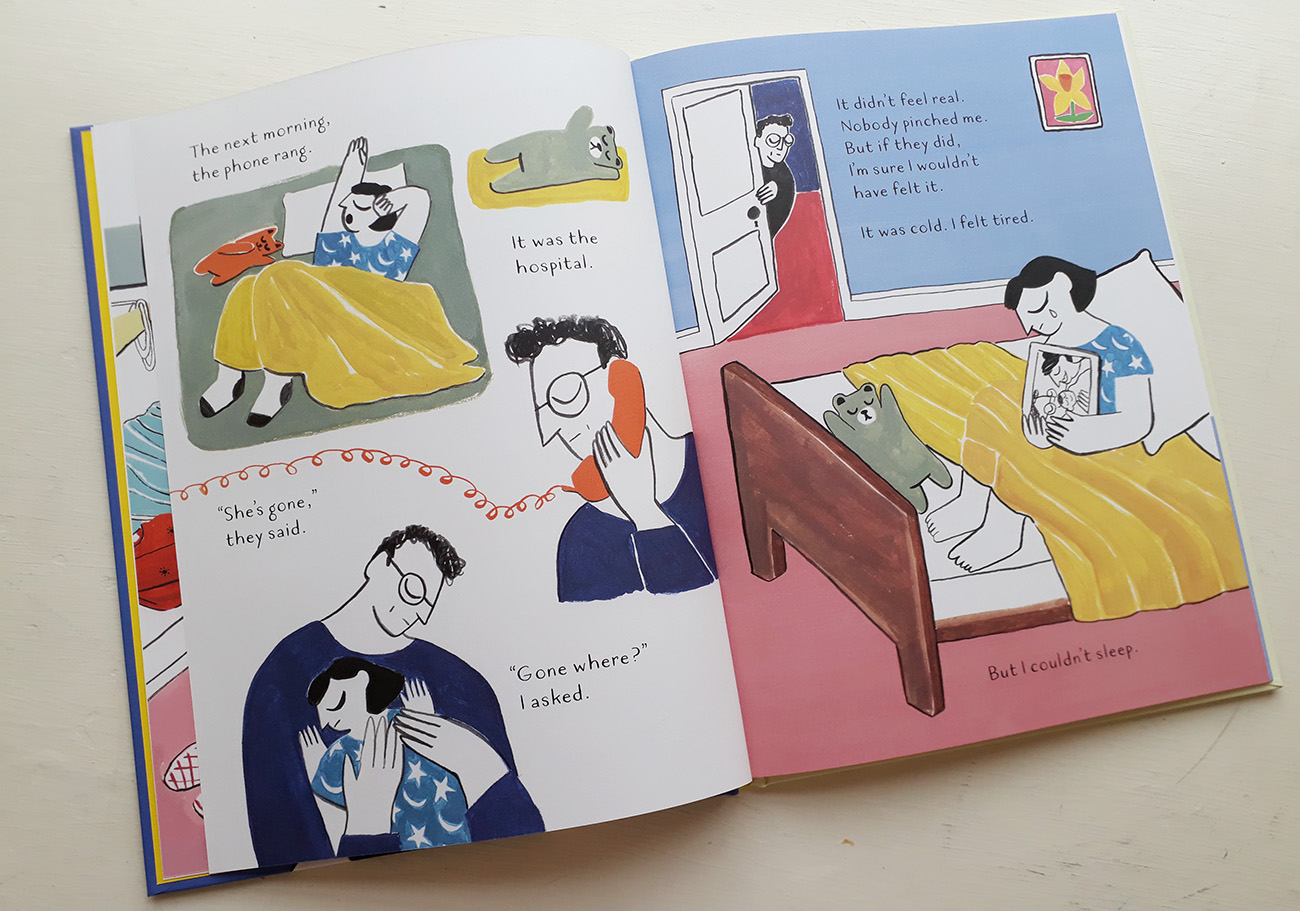
The sequence of events, actions and feelings, that start with the phone call announcing the mother’s death, are described by the child. Grief and confusion are conveyed in calm, quiet and intentionally subdued compositions, even when the text reveals her anger for no longer having a mum. The emotion within the artwork is raw and can be seen through the touching interactions between child and father as they try to comfort each other.
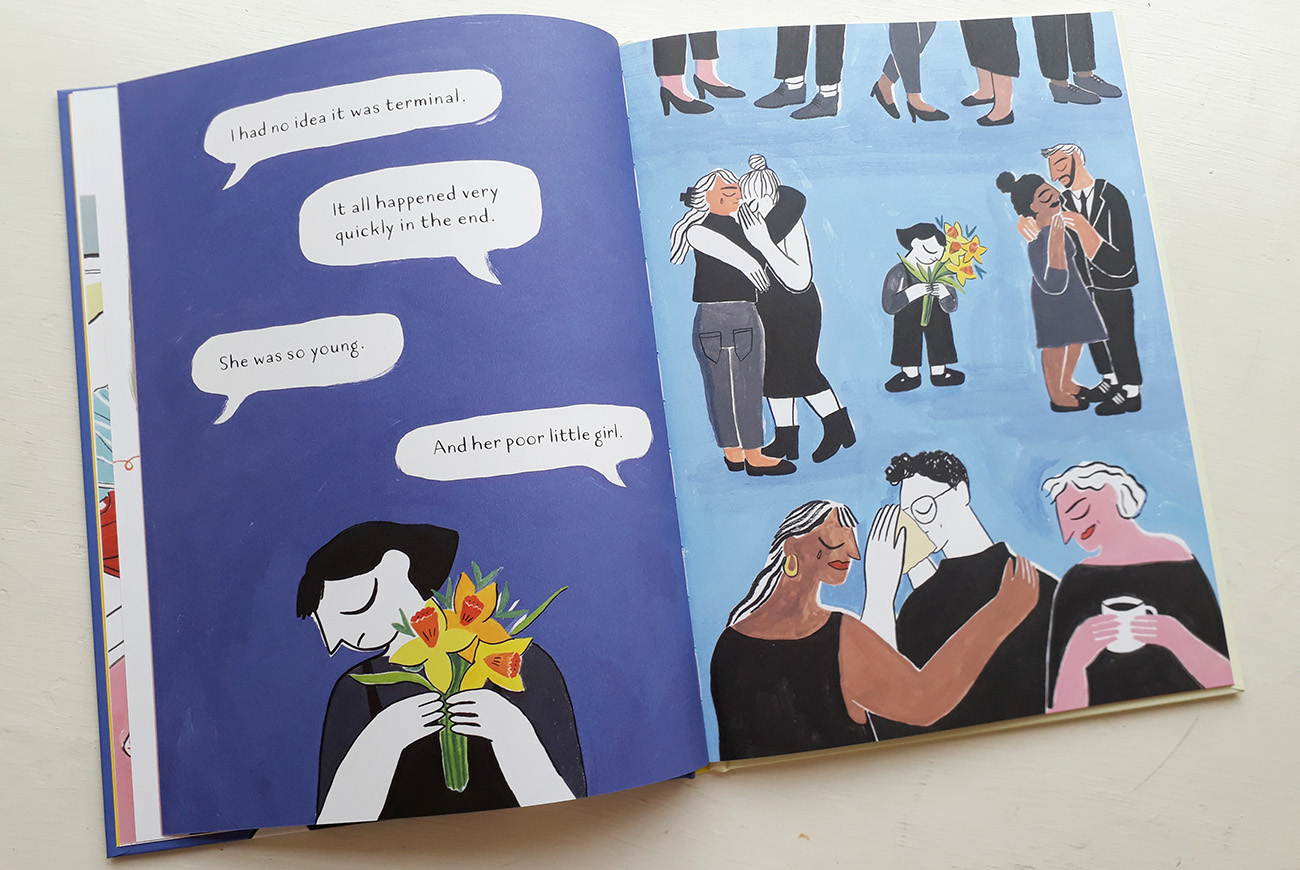
When discussing the funeral, Perkin is able to convey the absurdity of the occasion from the perspective of a child, “There were also sandwiches, but nobody wanted to eat them”. By doing this we get the sense of how bewildering it must be to process all of these unfamiliar situations and feelings. Perkin draws her characters using inky line and flat painted colour, which is used to suggest the mood of each illustration. Her characters are drawn with downcast eyes, which proves very useful within this context. But with the simple addition of a smiling mouth and playful compositions, the mood of the characters change, and they become more positive as they learn to live with their pain.
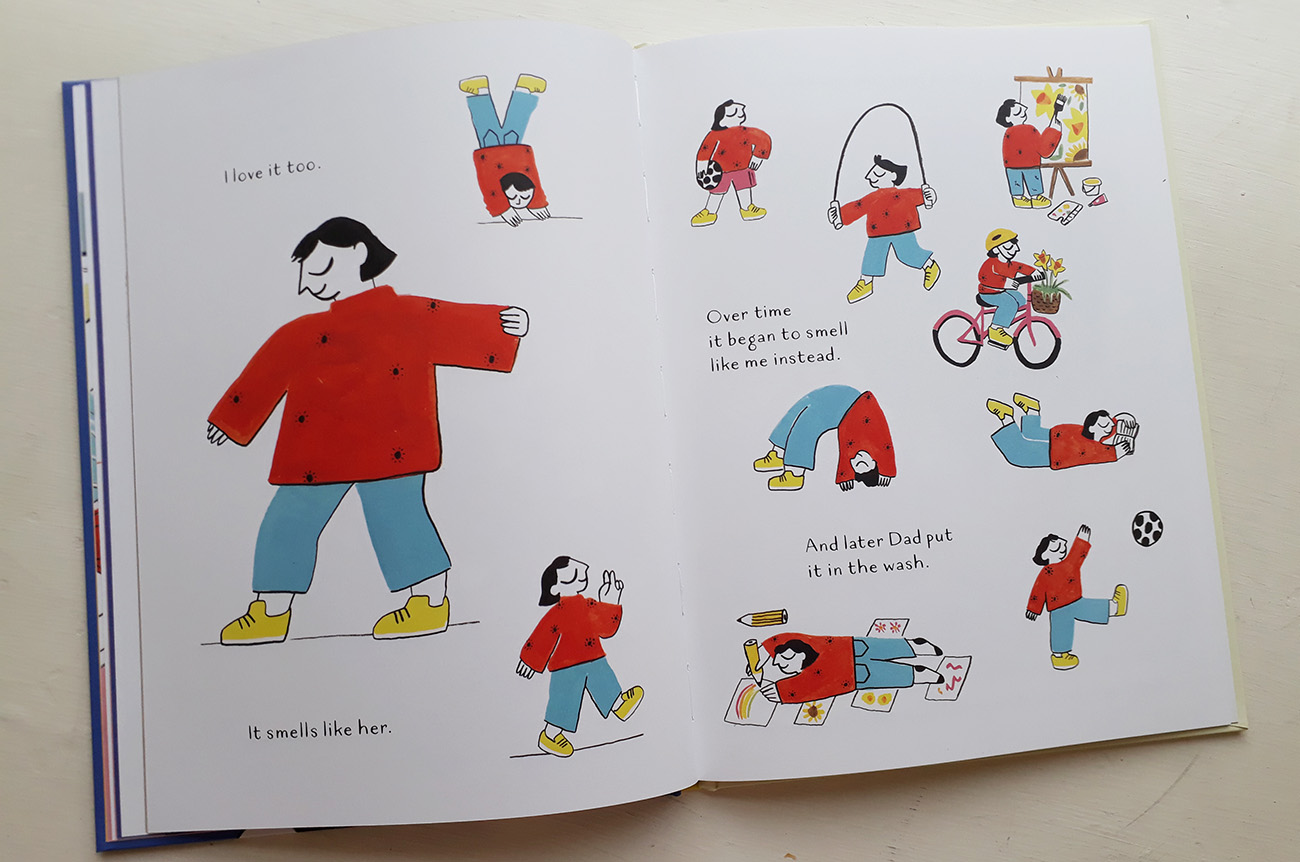
Metaphor and symbolism are used, as is often the case when trying to describe and depict emotions. Grief is drawn as a black smudge that follows the girl around. The girl and her father are shown swimming in their grief and these occasional dream-like spreads help to explain how and why they react the way they do when trying to get on with their lives. The jumper is the girl’s link to her mother, a comfort blanket that she needs (for the time being) to calm her, but it is also something that gives her strength. It is a useful tool for the story, as the reader should be able to empathise with this (how the smell, look or feel of something can remind us of a loved one) even if they don’t yet fully understand the idea of someone dying.
Children are inherently keen to learn about life and therefore, death. Mum’s Jumper could be a very good tool to help introduce this subject to children. It provides engaging and ultimately positive artwork, full of details that should hold children’s attention and go some way to explaining and comforting the reader.
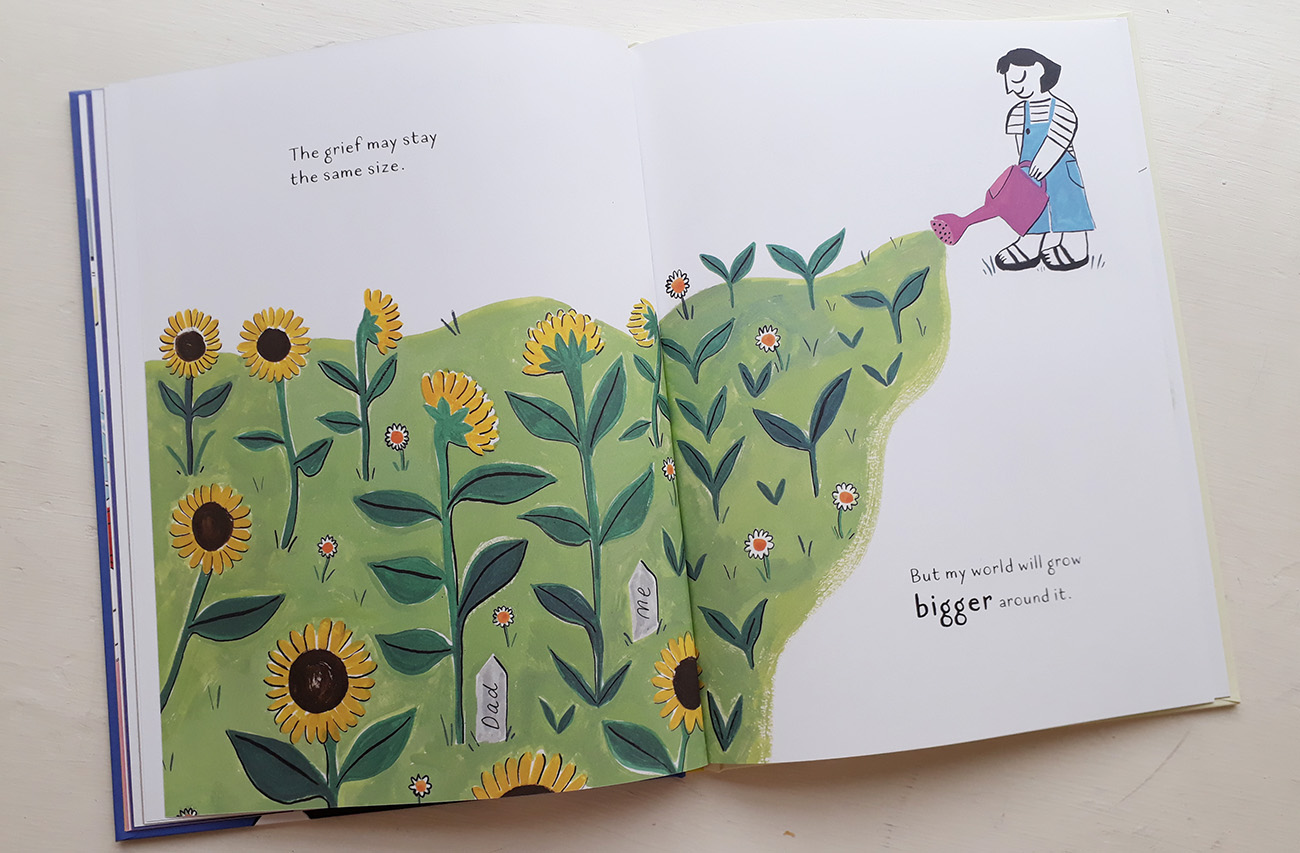
Will this book be one that a child, who is lucky enough to not have experienced this upheaval, wants to read again and again? This is uncertain, but the merits of this book for helping people like the family depicted here are seemingly clear. Illustration is a wonderful tool for depicting the unseen; feelings and thoughts, and this book aims to communicate the narrative of a grieving family. More and more books are being published that engage with and aim to explain the tough issues that life throws up and hopefully this trend will continue, Mum’s Jumper is an excellent addition to this genre.
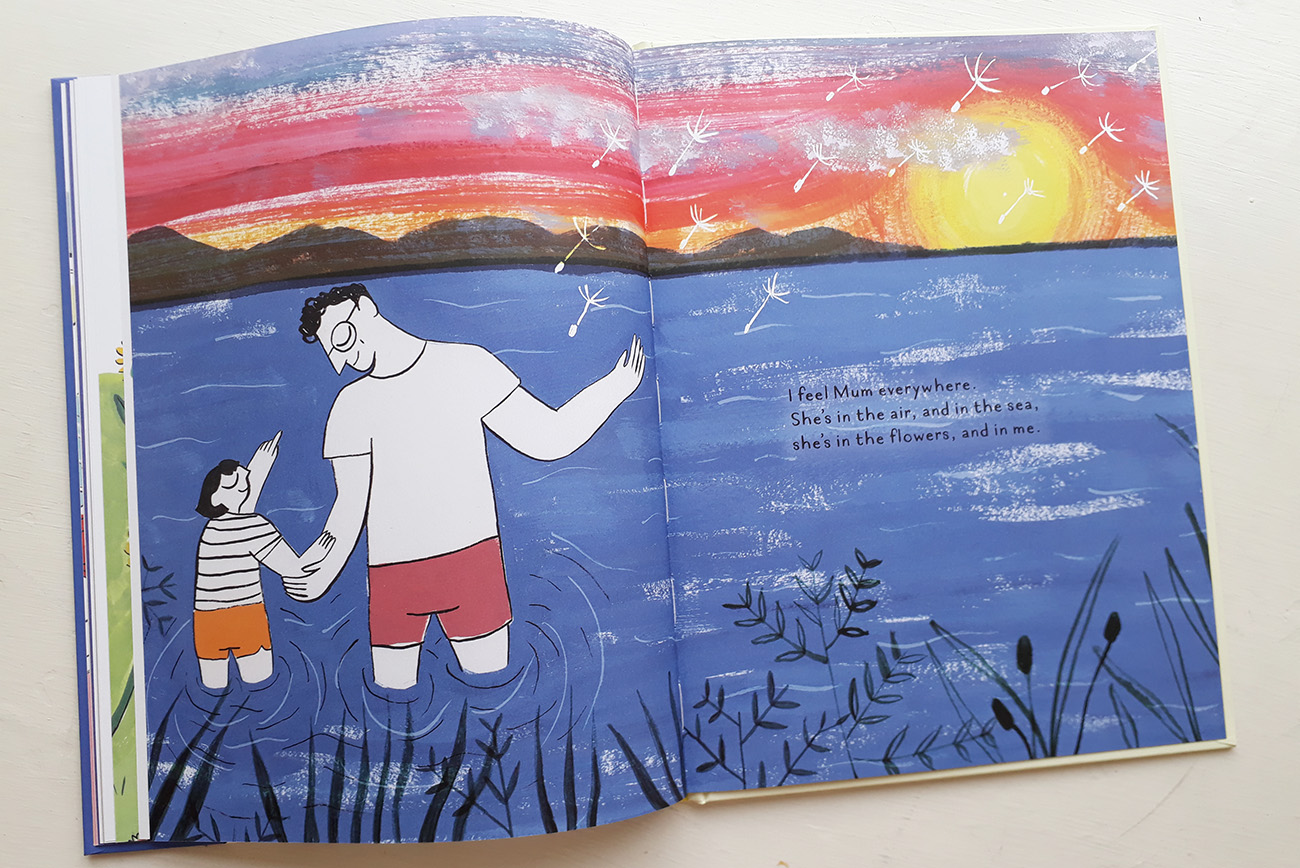
Back to News Page

